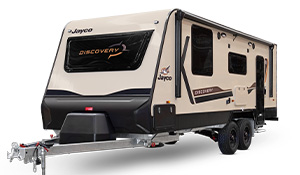How to: Water Crossing Driving Tips
Walk it
Unless the water is crystal clear, the only sure way to know what lurks beneath the surface is to get out of your 4X4 and get your feet wet. Yep, if you’re unsure of the depth you’ll need to walk it first, but only if it’s safe to do so (i.e. there are no saltwater crocodiles about).
When you’re walking through the water, you should be able to determine how much traction you’ll have when driving through it. Your feet will tell you where it’s rocky, where it’s sandy and where it’s muddy, so take note.
Keep an eye out for potential obstacles that could catch you out, such as rocks or logs. And look for deep holes that could swallow your vehicle.
Finally, if you’re crossing a flowing river, determine how fast the water is moving. If you struggle to stay upright on your feet, it’s going to be too fast to traverse in your vehicle without being washed downstream, so you’ll have to look for an alternative route.
Even if you don’t usually wear them, keep a pair of polarised sunglasses in your vehicle. They will allow you to better see what’s beneath the surface of the water. A pair of waterproof shoes wouldn’t go astray, either.

Preparation
If you’re going to be tackling deep-water crossings, you should fit a quality snorkel to your vehicle. A snorkel raises the air intake to prevent your engine from sucking in water. Even if you’re heading to the desert, there’s always a chance you’ll have to cross bodies of water, so a snorkel is a handy bit of kit on any 4X4.
A water crossing cover, sometimes referred to as a radiator blind or car bra, is designed to direct the water around your vehicle’s engine bay rather than through the radiator, preventing damage to the radiator itself, as well as under-bonnet electrical components. Water passing through the radiator can hit your engine’s plastic cooling fan, bending the blades forwards under pressure and cutting into the radiator itself.
There’s a number of dedicated water crossing covers on the market, or you could simply attach a plastic tarpaulin. If you opt for the DIY tarp method, make sure you secure it properly to your vehicle so that it doesn’t fall off and it doesn’t interfere with moving parts.
Your vehicle will have breathers on its gearbox, transfer case and diffs, and these should be fitted with extension tubes that lead to somewhere up high in the engine bay.
Some vehicles are equipped with these extensions as standard equipment. Check if your vehicle has them and if not source an aftermarket kit to suit. These will help prevent water from finding its way into these components, which can potentially cause damage down the track.
If you can judge the depth of the water from the driver’s seat, and you don’t think you’ll have any problems with the crossing, you should still pull up and let your vehicle cool down before plunging into the drink. Even with breather extensions fitted, hot vehicle components can suck in cold water past their seals.
Finally, before you take the plunge, have your recovery gear in a handy place in case something doesn’t go to plan. If it looks like a particularly challenging crossing, attach a recovery strap to your vehicle and have it ready to go; the less time your vehicle is stranded in the drink the better.

Driving across
If you have lockers, now is the time to engage them. Even if the surface beneath the water isn’t very slippery, you’ll want all the traction available to you.
Before driving into the water, select the correct gear for the crossing. On many vehicles this will be low-range second gear, which should provide enough speed to build up a decent bow wave in front of the vehicle without it splashing all over the bonnet and up the windscreen.
Once you’re in the water, and you’re happy with your progress, try to maintain a constant speed. If your vehicle feels like it’s bogging down, apply a little more throttle; if water starts splashing around too much in front of you, back off a little bit.

If your vehicle has a manual transmission, try to avoid gear changes halfway across; you should have already selected the correct gear. If you drive an auto, select the gear you deem appropriate rather than just leaving it in ‘D’ for drive.
A successful water crossing can be a triumphant experience, but don’t let it go to your head by rapidly accelerating out the other side. In fact, if there’s a slippery climb out, stop your vehicle on the bank for a few seconds to let the water drain out of it before proceeding. This will minimise track damage and make it easier for following vehicles to exit the crossing.

When you get home
If you’ve been driving through deep water, you’ll need to make sure it hasn’t made its way into critical vehicle components. When you get back home, lift up the bonnet and have a quick look in fuse boxes and around other electrical items. Check your radiator and cooling fan for any signs of damage. Pull out the engine and transmission dipsticks to make sure the oil isn’t cloudy and grey, which will signify water ingress.
After longer trips that have included several water crossings, you should also check the diff oil. If you don’t want to do this yourself, have a mechanic perform a thorough check of your vehicle, and make sure you mention you’ve been driving in the drink.









